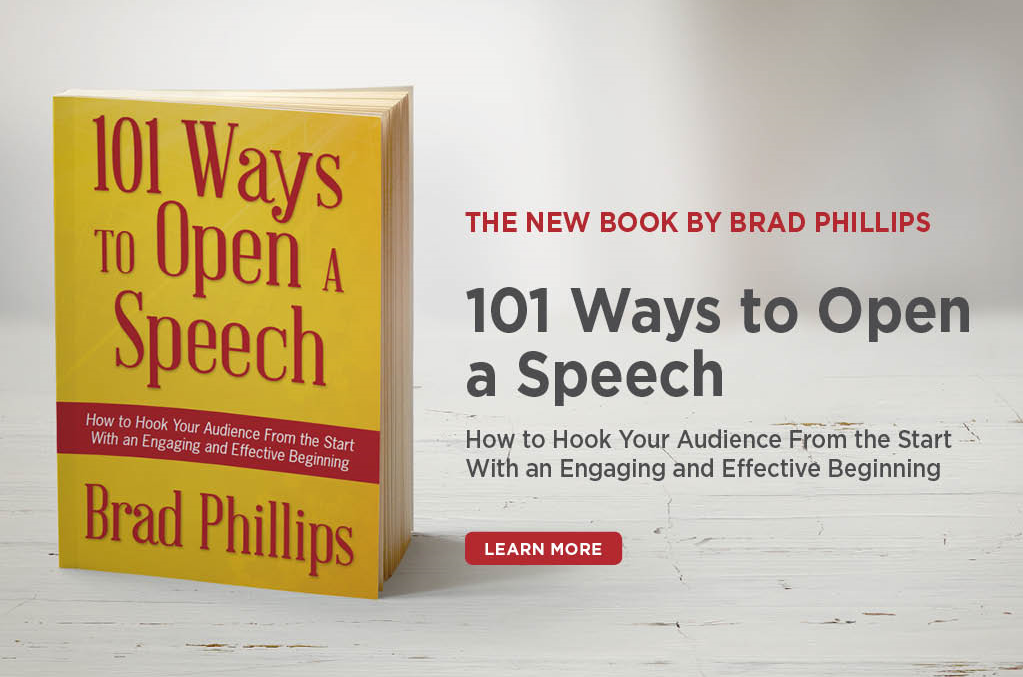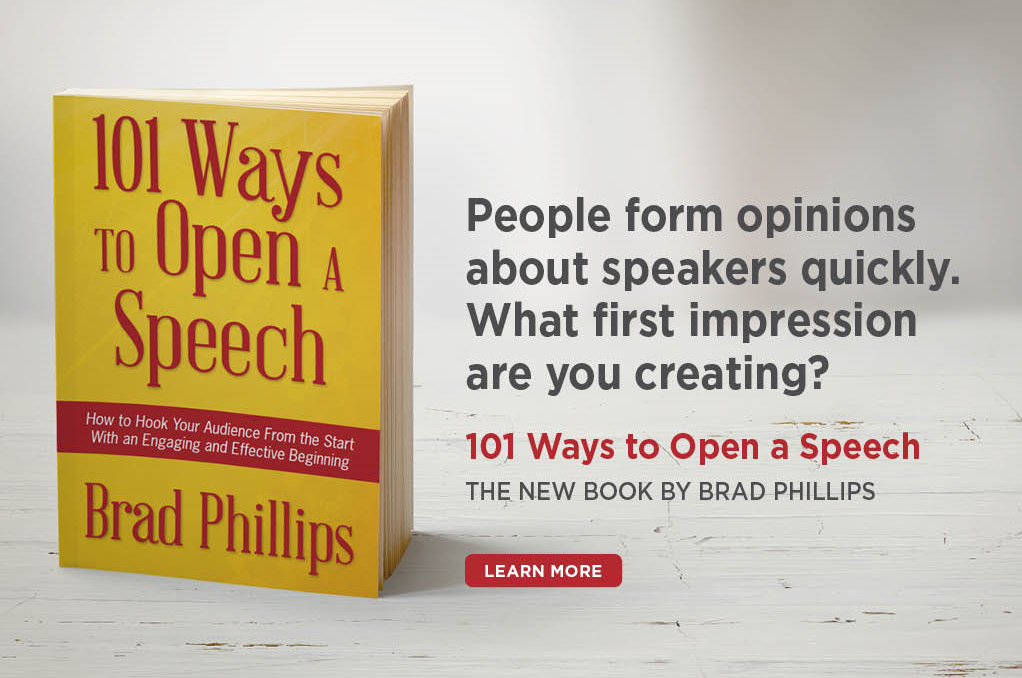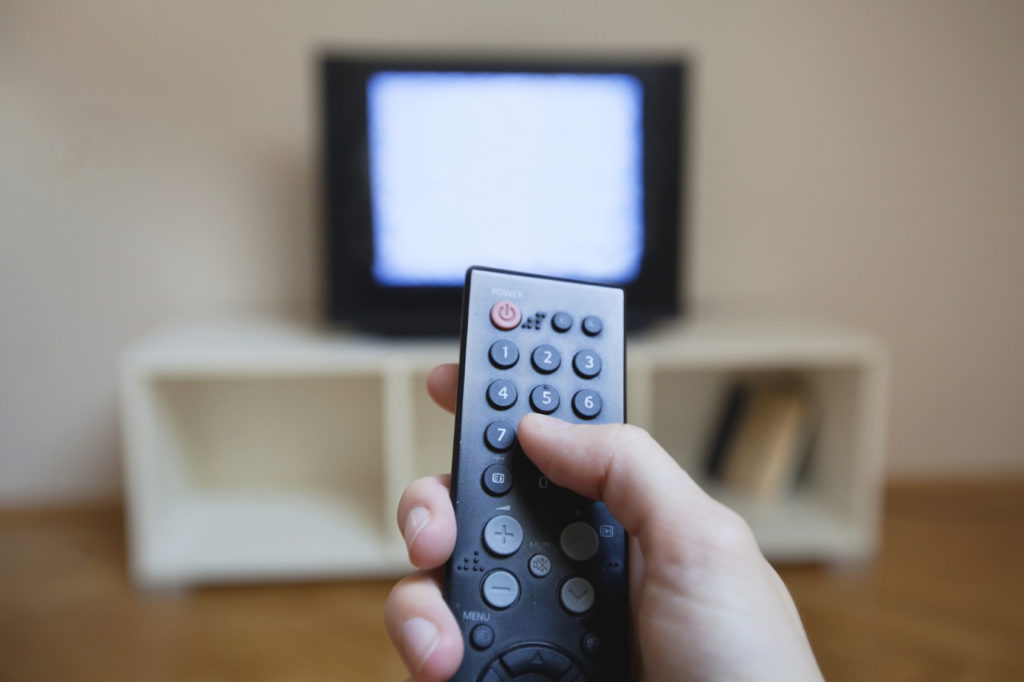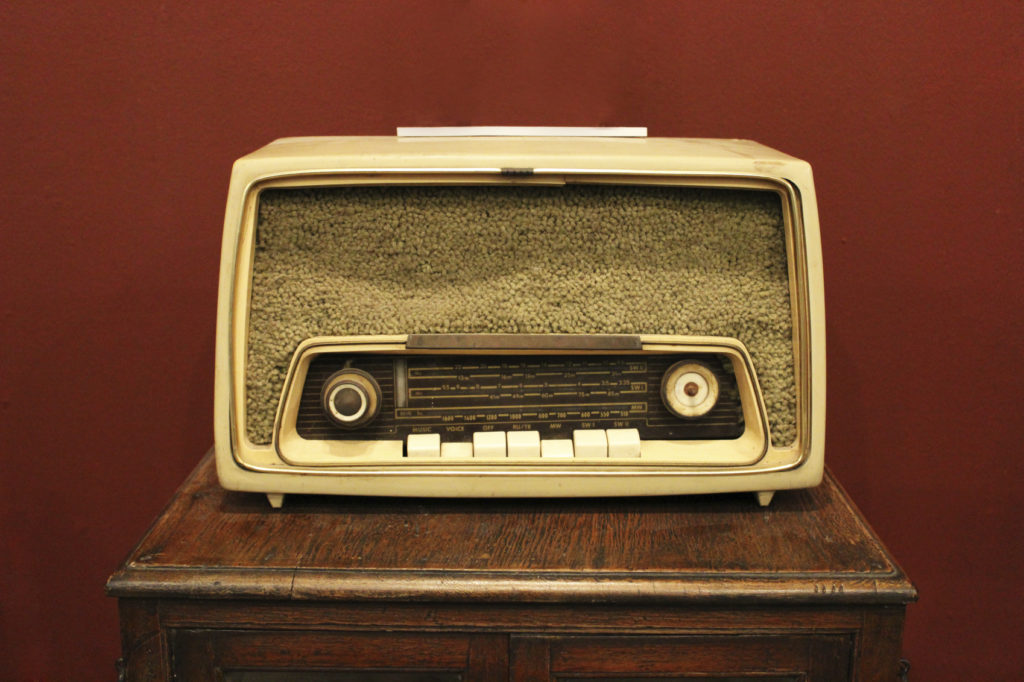Introduction To My New Book: "101 Ways To Open A Speech"
This post contains the five-page introduction to my new book, 101 Ways to Open a Speech, available in soft cover and for Kindle.
Introduction
Hi. My name is Brad Phillips, and I’m really excited to be writing this book. I’ve been a full-time presentation trainer for more than a decade, and I’ve worked with thousands of public speakers in an effort to help them improve the effectiveness of their talks. In this book, you’ll learn more about how to create an interesting open and find 101 examples of good speech openers. In addition…
Wait a minute. I think I owe you an apology. That opening paragraph probably didn’t grab your attention, which is an inauspicious start for a book purporting to teach you about hooking your audience from your very first words.
And yet, that type of opening is quite familiar, used by roughly 95 percent of the speakers we work with and observe in public speaking settings. It’s not bad, per se, since it communicates real information, but it fails to take full advantage of the critical opening moments of your presentations.
Openings offer you the opportunity to influence others, establish rapport, and exhibit creativity. They allow your main takeaway points to leap from your mouth and into the minds of the people sitting in your audience.
So if you’ll indulge me, I’d like to start over.

Introduction, Take Two
Can your audience form an accurate impression of you in just two seconds?
The late Nalini Ambady, a professor of psychology at Boston’s Tufts University, was fascinated by that question. To answer it, she and a colleague designed a study to test whether such “thin slices” of an impression could truly be accurate.
She filmed 13 instructors as they taught their classes throughout the semester and, at the end of the term, collected student evaluations of those instructors.
Later, she edited two-second clips of those instructors and showed them—without volume—to students who weren’t enrolled in those classes. Those students were asked to evaluate the instructors using several criteria, including overall competence.
Her findings were remarkable. Students who watched only a two-second video clip of the teachers in action formed a similar impression of the instructors as did the students who were enrolled in their classes for the full semester. (Ambady’s work made its own impression, serving as one of the main sources for Malcolm Gladwell’s business bestseller Blink: The Power of Thinking Without Thinking.)
Other studies have found similar results. Some show that first impressions are formed within seconds, while others find they take just a few minutes to solidify. Whichever studies you choose to believe, the end results all tell a similar story: people will form opinions about you quickly and, once they do, those opinions can prove difficult to reverse.
That’s not to say that your first two seconds must be unusually brilliant or that you can’t reverse an uncertain first impression. We’ve all had the experience of changing our minds about someone else—a speaker, a staffer, even a romantic partner—after a lackluster first impression.
But it does suggest that the opening moments of a presentation are particularly important. John Medina, a developmental molecular biologist and the author of Brain Rules, refers to those opening seconds as “cognitive hallowed ground” and writes, “If you are trying to get information across to someone, your ability to create a compelling introduction may be the most important single factor in the later success of your mission.”
The reason for that can be attributed, in part, to the “primacy effect,” which posits that when given a long list of words to remember, people tend to remember the words they heard at the beginning more than the words they heard in the middle.
Many researchers believe that the primacy effect can be explained rather simply: there’s less information at the beginning of a list (first one word, then a second, then a third), so it’s easier to move the words you heard earliest—the ones that weren’t competing against a long list of other words—to long-term memory. But once you get deeper into a list, it’s more difficult to keep track of all of the words. The 12th word you hear has to be added to the first 11, which makes recalling it more challenging. Of course, you already know that if you’ve ever struggled to remember a 10-digit phone number after hearing it only once.
The presentations you deliver won’t consist of reading long lists of words to your audiences, so the primacy effect may not hold perfectly in every case. A dramatic or emotional story shared in the middle of your talk may become more memorable than anything you said during your open. But the primacy effect does offer useful guidance about the way our brains work and retain, or “chunk,” information—and it’s reasonable to conclude that it applies, in full or in part, to many of the presentations you’ll ever give.
To take full advantage of a presentation’s precious opening moments, you’ll need to do two things for your would-be audience members: get them in the tent, and get them to focus on your bright shiny object.

Get them in the tent
The expression “get them in the tent” originated back in the days when salespeople traveled from city to city, raising a bold-colored tent to attract a curious crowd to which they could market their wares.
Those salespeople knew that they couldn’t make the sale until they got members of the community to show up—so their first goal, before “make the sale,” was “get them in the tent.”
Similarly, speakers should use their opens to get their audiences in the tent. You can’t make the rhetorical sale—of an idea or an actual product—until the audience has committed its attention to you.
Therefore, start strong. Capitalize on those vital opening moments from your first word—or at least from almost your first word.
Abandon the types of opens you’ve likely seen numerous times—the ones in which the speaker begins by apologizing for being nervous, thanking key members of the audience for two minutes, or telling an off-topic story about something amusing that happened the night before.
Those starters, while not out of the ordinary, squander the opening moments. It’s easy to imagine audience members in those settings mentally drifting away from the speaker’s tent mere moments after the presenter has started talking.
Focus on your bright shiny object
Beginning with a strong open isn’t enough. In fact, a powerful open that is not related to your key takeaway point can be destructive, since the audience may remember it, not the more important points that followed.
The open you choose must connect to the overall theme of your talk. Before you develop your presentation, ask yourself what your “bright shiny object” is—the one idea, more than any other, you want audience members to take away from their time with you. Your answer should be reflected in your open.
I call your one main idea the “bright shiny object” because, in successful presentations, it’s so prominent and luminous that the audience can’t help but to notice it. But in less successful presentations, envision your bright shiny object becoming duller—as if covered with a thin layer of dust—as your open becomes cluttered with too many ideas or buried beneath a poorly defined purpose.
The manner in which you communicate your bright shiny object is totally up to you—and that’s the fun part. As this book will illustrate, you can often make the same point in 101 different ways. That gives you great flexibility to find an open that’s right for you, one that reflects your personality, serves your specific goals and the speech topic, and allows you to put a fresh spin on older material that has started to feel a bit stale.
That concludes the second version of this book’s introduction. I hope you found it more engaging than the first.
101 Ways to Open a Speech is now available in soft cover and for Kindle from Amazon.
International readers can find the book in their country’s Kindle store in India, the U.K, the Netherlands, France, Spain, Italy, Germany, Japan, Brazil, Canada, Mexico, and Australia.


